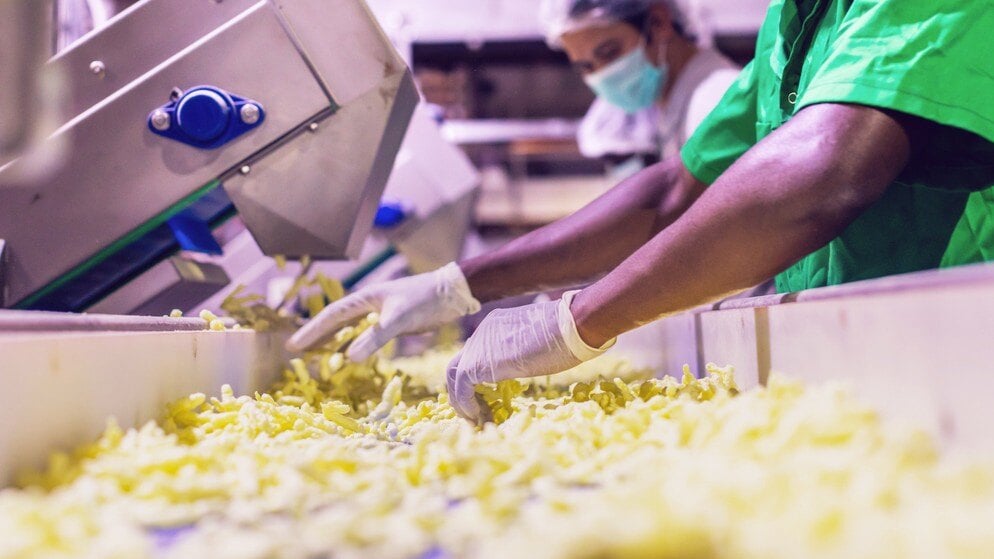How the Pandemic Changed Food Safety Preparedness for the Better
Five years after the COVID-19 pandemic disrupted supply chains, industries, and life as we knew it, the food and beverage manufacturing sector must continue to adjust to a new landscape. Industry stakeholders have adapted to pandemic food safety challenges, implementing new technologies and focusing on resilience.
While COVID-19 disrupted business as usual, it opened the door to a food safety renaissance, changing the trajectory of the science, protocols, and culture that protects and ensures the integrity of the global food supply. What changes did the pandemic bring about, and how will they continue to shape the future of the industry? Let’s look at the processes and protocols put in place during the lockdown, and which of them are still in place.
The Immediate Impact of Pandemic Food Safety Protocols
In March 2020, the normal workflow and processes food and beverage manufacturers had relied on for decades were no longer safe enough for the workforce. Businesses had to adopt a strict new set of pandemic food safety measures to curb the spread of COVID-19, upending every aspect of the industry with:
1. Enhanced Hygiene Practices
Facilities had to implement more rigorous hygiene practices — such as more frequent sanitization, employee temperature checks, physical germ barriers, and greater use of personal protective equipment (PPE) — to prevent the spread of COVID-19. The sudden and strict changes cut into productivity, required additional training, and dramatically increased operating costs.
2. Altered Staffing Protocols
Pandemic food safety measures altered protocols, policies, and even workplace culture, including a shift to remote work, staggered shifts, and reduced workforce capacity to ensure social distancing. This hurts production efficiency and employee morale.
3. Inspection Disruption
Travel restrictions and safety concerns disrupted routine inspections by regulatory bodies, affecting compliance and quality control measures. Companies had to rely more on self-inspections, virtual audits, and documentation to maintain regulatory compliance and ensure food safety.
Lessons Learned From Pandemic Food Safety Measures
Out of the disruption of 2020, some adaptations and perspective shifts have become permanent fixtures of the food safety landscape, providing a glimpse into a brighter and better food safety future. Among the four biggest lessons learned were:
1. The Importance of Sick Leave
With increased germ consciousness after COVID-19, many food and beverage manufacturers have adopted more liberal sick leave policies for employees to encourage them to stay home when ill, rather than relying solely on PPE and sanitation to stop the spread of contagions. Not only does this better protect public health, it creates a safer work environment that prevents rapid spread of disease among staff.
2. The Need For Rigorous Supplier Verification
One of the biggest unexpected impacts of COVID-19 was prompting manufacturers to strengthen their supplier verification programs. Previously, procurement teams relied on basic questionnaires to assess prospective suppliers' food safety programs. But with the rapid (and frequent) shift to new suppliers during the pandemic, and the increased risk of shortened supplier vetting time, manufacturers began demanding not only details about their suppliers' food safety programs but also proof of implementation.
This pandemic food safety practice has stuck around since lockdown ended, reinforcing food safety standards across the industry and reducing the risk of unscrupulous practices like food fraud.
3. The Impact of Battle-Tested Crisis Management Plans
Pandemic food safety issues led manufacturers to improve their crisis management plans. The chaos of 2020 highlighted the vulnerabilities and gaps in existing strategies, allowing stakeholders to overhaul their plans and close vulnerabilities. Now, facilities are better prepared to overcome future challenges with less disruption and setbacks.
4. The Effectiveness of Virtual Inspections
With the world effectively shuttered during the pandemic, food and beverage manufacturers, regulators, and other stakeholders were forced to rely on video conferencing for remote inspections to continue operating.
Post pandemic, these practices have become accepted and popular, providing cost-effective options for streamlined inspection processes (where the FDA allows), reducing costs without sacrificing effectiveness. They even enable more frequent and thorough inspections by cutting out travel time and other logistical challenges, ultimately enhancing oversight and trust in the food supply.
Maintaining Pandemic Food Safety Standards in the Post-Pandemic Era
COVID-19 disrupted the global food safety landscape, forcing the industry to reimagine policies, standards, and entire operations. Though this was a challenging period for everyone involved, the adaptations stakeholders implemented transformed food safety for the better, accelerating innovation, improving resilience, and increasing emphasis on hygiene and safety protocols.


